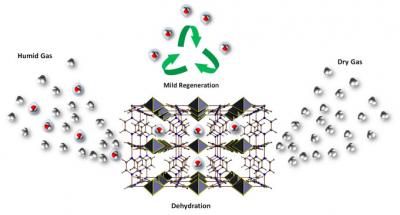Agilent Technologies provides new method for determining trace metal impurities in semiconductor grade phosphoric acid
Agilent Technologies Inc. today announced a new method to determine trace metal impurities in phosphoric acid. The new method uses the high detection capability of the Agilent 7500cs reaction cell ICP-MS to determine parts-per-trillion level impurities in phosphoric acid for all of the important SEMI (Semiconductor Equipment and Materials International) specified elements. The new application presents the user with detection limits, BECs, spike recovery and stability data highlighting the suitability and accuracy of the new 7500cs.
Contamination control in semiconductor processing is increasingly important as critical dimensions (CD) of devices continue to shrink. Particulate contamination, which can lead to device defectivity, must be minimized at each of the integrated circuit (IC) manufacturing stages. Because more than 50 percent of the yield losses in IC manufacturing are due to micro contamination, it is critical that the wafer surface is not contaminated by metallic impurities present in the acid. In order to minimize this risk, many incoming chemicals including phosphoric acid are analyzed for chemical purity.
The Agilent 7500cs ICP-MS provides the testing of difficult matrices like phosphoric acid, enabling high performance, reliability and sensitivity in trace metal analysis. Designed for semiconductor and research facilities that demand the widest elemental coverage and ultimate detection power in high purity matrices, the new 7500cs features an octopole reaction system (ORS) and ShieldTorch for interference removal in a full range of semiconductor matrices.
Most read news
Other news from the department research and development

Get the chemical industry in your inbox
By submitting this form you agree that LUMITOS AG will send you the newsletter(s) selected above by email. Your data will not be passed on to third parties. Your data will be stored and processed in accordance with our data protection regulations. LUMITOS may contact you by email for the purpose of advertising or market and opinion surveys. You can revoke your consent at any time without giving reasons to LUMITOS AG, Ernst-Augustin-Str. 2, 12489 Berlin, Germany or by e-mail at revoke@lumitos.com with effect for the future. In addition, each email contains a link to unsubscribe from the corresponding newsletter.
Most read news
More news from our other portals
See the theme worlds for related content
Topic World Mass Spectrometry
Mass spectrometry enables us to detect and identify molecules and reveal their structure. Whether in chemistry, biochemistry or forensics - mass spectrometry opens up unexpected insights into the composition of our world. Immerse yourself in the fascinating world of mass spectrometry!

Topic World Mass Spectrometry
Mass spectrometry enables us to detect and identify molecules and reveal their structure. Whether in chemistry, biochemistry or forensics - mass spectrometry opens up unexpected insights into the composition of our world. Immerse yourself in the fascinating world of mass spectrometry!




























































